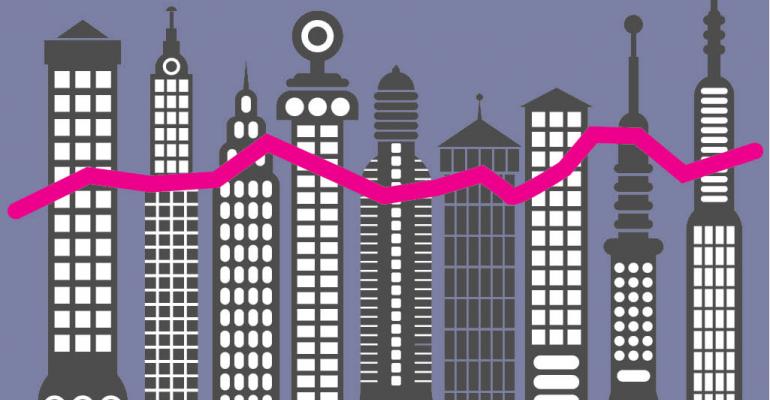Many commercial real estate investors are watching asset prices move higher and wondering whether the underlying values are there to support those eye-popping price tags.
Occasionally, both price and value on commercial properties are in perfect step and that balance translates to a fair market price. More often than not, the cyclical nature of real estate means that values are chasing prices or prices are chasing values. Coming out of the recent recession, investors took advantage of buying opportunities that were created in part by the credit crisis and lack of liquidity. Now the pendulum is swinging the other way. The abundant capital in the market and voracious investor appetite for acquisitions has resulted in sale prices being pushed higher than values across many metros.
A recent report from commercial real estate services firm CBRE suggests that, not only are today’s sale prices valid, but there is room for pricing to move higher still. “I think prices are pretty well-supported,” says Richard Barkham, Ph.D., global chief economist with CBRE in London. Several factors are supporting those prices and a healthy outlook for rising values—namely, good economic and job growth, along with rising occupancies and rents. “We see quite strong rental uplift over the next several years, which will lift cash flow,” says Barkham.
CBRE recently conducted global analysis of spreads between regional class-A office property yields and the local bond yields. The historical trend shows an average spread of about 300 basis points. The current snapshot shows the U.S. coming in below that benchmark, with a spread of 240 basis points between bond yields and cap rates. However, when accounting for forecasted rental increases the spread jumps to 850 basis points.
In fact, on a global basis, the U.S. has the highest regional spread compared to the EMEA, which is at 650 basis points, and Asia on the low side at 270 basis points, according to CBRE. “What that says to me is that we have plenty of room in the U.S. for prices to run higher, and that’s what we expect over the next two or three years” says Barkham.
The CBRE report looks at the spread among gateway cities such as Los Angeles, New York, Boston and Chicago. “But I think as the U.S. economy continues to grow and the recovery spreads out into the second-tier cities and now the third-tier cities, we will see that same pattern of rising values and prices emerge in the second and their tier cities,” says Barkham. Essentially, it is a great time to be buying in Middle America, he adds.
Values are chasing prices. But that does not necessarily mean that sale prices have reached the ceiling, agrees Ken Riggs, president of Situs RERC, a real estate firm that specializes in property valuation management, appraisal, research and risk analysis. “I think prices will move higher for another 12 months,” he says.
The question becomes: “Where are the best opportunities?”, adds Riggs. Most of the bargains have disappeared. Rather, investors have to take on more lease-up risk and development risk to achieve better returns, and that is happening, he notes. Investors also will have to go into smaller markets that offer higher yields.
According to Situs RERC’s Metro Ranking Index, the majority of metros on its top 20 list of cities offering the “best relative value” for commercial real estate investment are secondary markets. The top five cities on that list are Austin, San Antonio, Raleigh, Dallas and Orlando. Noticeably absent are major metros such as New York City, Los Angeles, Boston and Washington, D.C. “I think we are just at the crux where values in the big markets are pushed as hard as they can,” says Riggs.
The risk for investors buying properties today at exceptionally low cap rates is that they may need to sell those assets in five to seven years when there is the potential that interest rates may be 200 or 300 basis points higher. Higher interest rates have the potential to take away value very quickly as cap rates generally rise along with interest rates. As such, today’s investors have to have a longer term view and stronger confidence in the strength of the assets they are buying, says Riggs.
However, the general consensus is that commercial real estate remains attractive compared to alternatives, including the low yield on bonds or the volatile stock market. “As long as the U.S. economy continues to grow and generate jobs, then I think that current cap rates are well-supported,” adds Barkham. “There will come a time in four to five years when interest rates start going up when that equation might look a little more questionable. But that is quite a longs ways out.”

